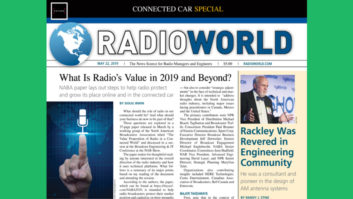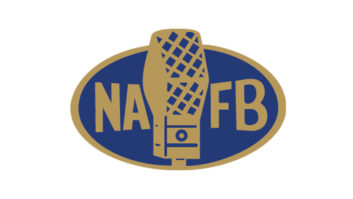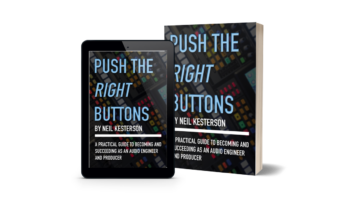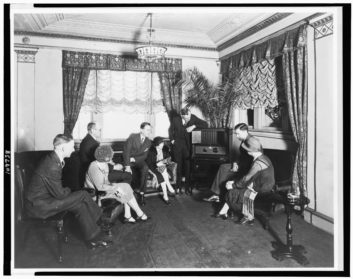
Anyone who has deejayed in radio in the past 60 years knows about airchecks. They are as much a part of top 40 radio’s legacy as spinning Led Zeppelin’s “Stairway to Heaven” and exploiting its 8:02 running time for a much-needed bathroom break.
In top 40 terms, “an aircheck is an off-air recording usually intended to showcase the talent of an announcer or programmer to a prospective employer,” said Rick Burnett, former radio deejay and owner of TwinCitiesRadioAirchecks.com in St. Paul, Minn. “Additionally, the airchecks were used for self-critique and evaluation by radio management and for legal archiving of content that is broadcast over the air.”
This is how airchecks from radio’s rock’n’roll era are generally understood today. But this definition hasn’t always held true: The earliest airchecks were “transcriptions” meant to capture live shows for rebroadcast at other times and on other stations. Due to technology limits, using them to find jobs wasn’t usually an option.
THE ROOTS OF AIRCHECKS
Like many firsts, it is difficult to know when the actual first radio aircheck was recorded. This confusion is muddied by the fact that certain early broadcasts — like KDKA Pittsburgh’s Nov. 2, 1920 coverage of the Harding/Cox presidential results — were recreated and recorded after the event, then touted as authentic airchecks.
According to the National Archives, a 1923 Armistice Day Broadcast by former President Woodrow Wilson made by phonograph technician Frank L. Capps “is the earliest surviving sound recording of a regular radio broadcast.” It was transmitted over WEAF in New York, WCAP in Washington and WJAR in Providence, R.I; and can be heard online at https://tinyurl.com/y44yon8h.
[Before Digital: Remembering the Tascam 122 Mk II]
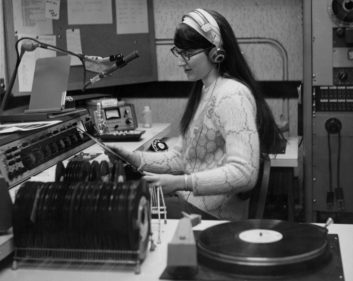
Wilson’s speech is among a handful of airchecks from radio’s early days. This is because “in the early 1920s, everything was live,” said Donna Halper, a noted media historian, radio consultant and radio broadcaster who is also credited with having discovered and promoted the band Rush when she was music director at WMMS(FM) Cleveland in 1974. “So we have few, if any, original recordings from about the first 10 years of radio.”
The lack of early airchecks is due to the fact that “there was no easy way to make radio recordings,” said Halper. “You could use a Dictaphone [that scratched audio waves into wax cylinders], and a few people actually did that. But there was no way to record live audio for later re-use.”
AIRCHECKS EMERGE
In 1929, the National Radio Advertising Co. Inc. of Chicago under President Ray Soat started to record short radio programs sponsored by Maytag on 12 inch 78 rpm shellac discs. These 78s were sent out to radio stations in hopes that they’d play them on air — and many did.
However, it took the invention of “transcription turntables” in the 1930s for live radio recordings to take hold. Such recorded programs — which were known as transcribed broadcasts — involved engraving the live feed directly onto a lacquer-coated 16 inch 33 rpm disk. This transcription method could also be used to record local commercials and other often-played content, but it was a gamble: If someone blew their lines, the disc had to be scrapped and the whole process started again from the top.
Despite the risks involved with transcribing broadcasts to discs, they were a popular way for broadcasters to syndicate shows to other stations. “Long distance phone lines were very expensive,” said Halper. “So transcribing shows to disc was an economical way to record and distribute radio programming.”
Today, the classic radio shows made by Jack Benny, Fred Allen and other greats of Radio’s Golden Age (the 1930–50s) that are available to hear online owe their existence to 16 inch transcription discs.
TAPE MAKES THE DIFFERENCE
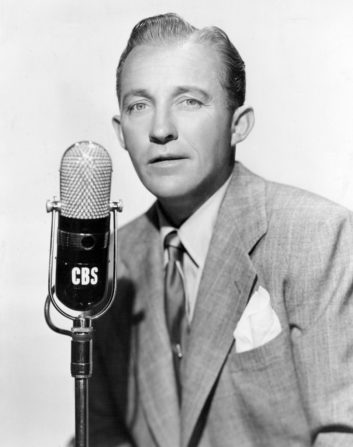
Although the transcribed discs of the 1930–50s are airchecks by definition, they do not fit the current definition of the word. This didn’t happen until magnetic tape recorders made their way into radio following World War II.
Crooner and ABC Radio star Bing Crosby led the way. He was introduced to magnetic reel-to-reel tape by Ampex in 1947.
Impressed, Bing ordered 20 first-generation Ampex 200A recorders (and wisely bought stock in Ampex); allowing his “Philco Radio Time” show to be re-recorded, edited and tape-delayed by time zones in 1948. This mattered, because going “straight to air” had forced Crosby to do two live shows on the same day, one for the East Coast and one for the West later on.
“Bing, being a rather laid-back individual, knew he had difficulty enough getting through one show error-free, so repeating it three hours later would be next to impossible,” according to the AES paper “History of The Early Days of Ampex Corporation.” “Obviously, being able to record and edit was a necessity.”
AIRCHECKS AND ROCK’N’ROLL RADIO
It took a few years for reel-to-reel tape recorders to find their way in American radio stations. (Compact cassette tape recorders didn’t take serious hold until the 1970s). Once “reel-to-reels” arrived, even the smallest of radio stations could record, edit and re-record audio themselves. Suddenly, anyone who wanted to “aircheck” their own shows could do so.
A speed of 7.5 inches of tape per second was fast enough for decent quality audio, with a 10.5 inch reel able to hold 64 minutes of content. Stations also “logged” 12 hours’ worth of on-air broadcasts for regulatory purposes (e.g. to address listener complaints and FCC queries) by running one 10.5 inch tape reel at a painfully slow, low-fidelity rate of 15/16 inch per second.
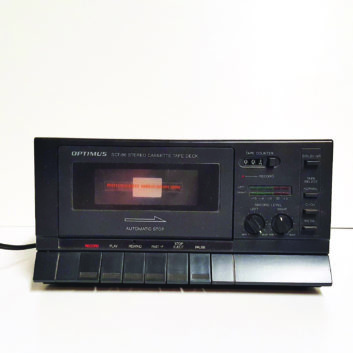
Reel-to-reel’s arrival coincided with radio’s rebirth as a top 40 music medium (following the migration of its traditional content to TV in the 1950s and early 1960s). Once deejays and program directors alike got access to this technology, they started “airchecking” shows on a regular basis.
“When I was a disc jockey, I would make my own airchecks and work on them at home for fear of the station finding out I was looking for another job,” said Mel Phillips of MelPhillipsRadioViews.com. “When I was looking for talent there were two ways I acted: Either listening to airchecks sent to me or what turned out to be the best way; taking a trip and listening to the radio.”
TWO KINDS OF AIRCHECKS
As airchecks caught on, two versions evolved. The first were “unscoped airchecks,” in which the entire show was captured complete with music and ads. The second were “scoped airchecks,” which only captured the deejay speaking.
“I remember several scoped aircheck systems I’ve done over the years,” said Grady Moates. A former radio engineer, he owns LOUD & Clean, a Boston firm that designs, installs and maintains radio broadcast facilities.
“All it took was connecting a $10 relay across the ‘On-Air Light’ voltage feeding the On Air Light on the wall by the studio door, and connecting the ‘normally-open’ contacts of that relay in series with the little motor in the cassette recorder so that the motor turned on only when the light was on,” he said. “With air-monitor audio connected to the record input jacks, all an announcer had to do was insert a blank cassette into the machine when their show started, press the Record button, go do their show, press Stop and retrieve the cassette.”
Today, airchecks are recorded digitally as MP3s, but the science remains the same.
AIRCHECKS AS TIME MACHINES
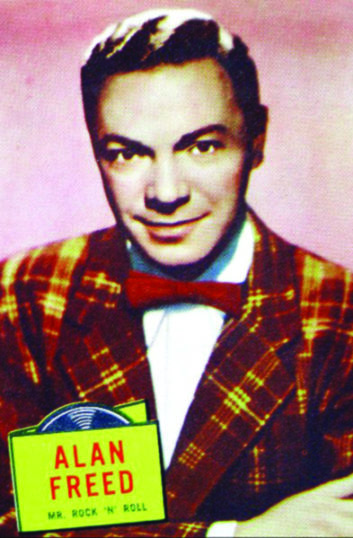
Over the years, deejays and fans alike have recorded a vast number of airchecks. Many of them can now be heard online at web sites such as airchexx.com, archive.org (aka the Internet Archive), ReelRadio.com and TwinCitiesRadioAirchecks.com, among others. These aircheck sites let listeners hear famous deejays like Alan Freed and Wolfman Jack, plus local stars from their own cities and states — voices pulled from radio’s past brought into the here and now.
A case in point: Tom Gavaras, who previously worked at Minnesota radio stations, including WCCO(AM), launched his own Twin Cities aircheck website 15 years ago. Using his own airchecks and those provided by more than 100 fans, Gavaras’ RadioTapes.com lets people hear more than 2,000 recordings of Minneapolis/St. Paul radio stations from 1924 to the present. These clips include local deejays and reporting on major events such as the Kennedy assassinations, the Apollo space flights and Watergate.
[Subscribe to our newsletter and get it delivered right to your inbox.]
“In some cases, people don’t have a way to digitize the reel-to-reel or cassette tape airchecks they own,” said Gavaras. “I have enough of these machines plus computers to digitize three contributed airchecks at a time.”
Now operating a radio aircheck site can come with unexpected hassles. For instance, ReelRadio.com removed unscoped airchecks from its online site, following a copyright complaint from the Recording Industry Association of America in 2014.
Still, airchecks abound on the internet. Just type “radio aircheck” into Google or YouTube, and you’ll come across thousands.
Airchecks can even be searched by deejay, year, station or city. So if you want to relive your youth by listening to the actual radio you grew up with, airchecks can make it happen for you. With online radio airchecks, time travel is only a mouse click away.
Share your own aircheck stories. Email [email protected] with “Letter to the Editor” in the subject field.
